The Walking Dead returned on February 8 with its mid-season premiere, and I, for one, had my “I <3 Daryl Dixon” wristband on in preparation. Even in this time of excitement, it’s still important to remember the corpses that, er, cleared the path for our current undead addiction.
There’s probably no easier way to get horror fans fighting than to declare the living-impaired former humans that don’t conform to specific characteristics of a zombie are, in fact, zombies. I’m speaking, of course, of the original modern zombies, which first appeared in George Romero’s Night of the Living Dead.: mindless, shuffling, flesh-hungry automatons. The phone crazies in Stephen King’s Cell, for example, are still technically alive, so even though they attack the living in mobs, often show signs of rot and decay, and appear to have no higher reason, you might have a fight on your hands if you use the z-word on them.
You don’t see this kind of genre-policing with other monsters like, say, the vampire. A lot of people roll their eyes at the sparkling vamps in Twilight, but very few deny that they fit in the larger definition. Fiction has given us vampires that walk in the sun, don’t need blood as sustenance, or are a separate species from humans (meaning, contrary to legend, vampirism isn’t contagious).
Indeed, eschewing legend was what set Romero’s 1969 film apart. Before Night of the Living Dead, the zombie was more like a golem, created by a sorcerer towards a specific, often murderous, purpose. They were the tools of someone’s will, not a mob united towards a shared ravenous purpose. It tickles my sense of irony, then, that in the world of Robert Kirkman’s The Walking Dead, whose zombies follow so perfectly the Romero formula, his iconic film doesn’t exist (Kirkman himself has said this is why his characters don’t call the walkers zombies, and why they don’t know right off the bat to aim for the head).
If you are a traditionalist who likes zombies slow, stupid, and starving for brains, here are six books that aren’t shy about taking a page from the Romero playbook.
Written in diary form from the point of view of a soldier on leave from deployment overseas, Day by Day Armageddon has a much better sense of bullets-to-kill-shot ratios than one usually finds in zombie fiction. From a purely practical standpoint, Rick & Co. simply cannot be landing as many head shots as they do. While the novel doesn’t particularly address the larger questions of human society in the apocalypse, it does very carefully address the smaller ones: the nuts and bolts of survival.
This may be a harder sell as a traditional zombie novel, as it includes giant constructed mecha-zombies and a cult devoted to armadillos, but the zombies in The Gospel of Z are otherwise pretty traditional. (They do also have a tendency to bear-crawl, which is very alarming.) Done well, zombie stories grapple with grief, as everyone surviving has lost everyone who hasn’t. Jones runs the apocalypse 10 years down the road, from this place of familiarity to escalating weirdness, providing emotionally resonant way to express that loss.
Temple, the main character of The Reaper’s Are the Angels, is the harsh, pragmatic daughter of a zombie-blighted American south. In some ways, she’s more comfortable with the dead than the living; the simplicity of their needs is, if not enviable, then at least more legible than those of the living. The novel probably owes more to the Old Testament morality of the Southern Gothic than it does to Romero’s class commentary, but the zombies are the same, down to the fact that anyone who dies, turns. (A surprisingly uncommon detail, even in the most faithful zombie novel.)
There’s a lot about This Dark Earth that follows the tropes of zombie fiction very closely, from the zombies themselves, to broader questions often posed by post-apocalyptic fiction: how will we maintain our humanity in the face of relentless savagery? But Jacobs doesn’t have to rely on gimmicks to explore the question of society. The Prince, like Carl from Walking Dead, cannot remember the modern world, and the line between expediency and cruelty grows thin.
When the film version of World War Z transformed the book’s slow zombies into fast ones, a million voices cried out in terror. Understandably: almost none of the book holds up with the shift to “fast zombies.” While the novel doesn’t hew exactly to Romero, Brooks’ zombies function much like Romero’s in the narrative: they are there to show society’s responses to civic trauma. Not everyone who dies becomes a zombie, leading to the awful military choice to kill the living to create a firebreak against the dead. Contrast this with the opening to Dawn of the Dead, which shows a police force at odds with the residents of an apartment building who are protecting their reanimating dead in defiance of martial law. While the zombies may be slightly different, both writers use them to show the tension between community and security.
In Whitehead’s novel, in addition to the usual slow, collecting mob, there exists a small number of undead called “stragglers,” who are frozen in tableau while doing everyday things—flying a kite, running a copy machine. The characters ruminate on these creatures: was this the action that defined the straggler’s life, or just a random moment caught like a photo? (This results in some mordant comedy, such as when one character blows away a straggler standing over a fast food deep fryer “on principle.”)Zone One is less a genre exercise than a eulogy to a lost New York, and the stragglers, as they stand rotting, fit beautifully into his observations and reflections. Is our memory of the past random or representative?
~barnesandnoble.com/ceridwenchristensen


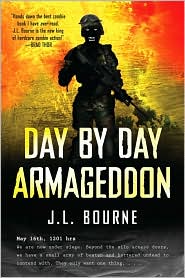
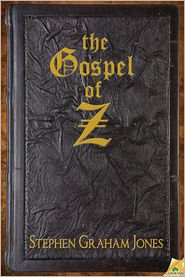
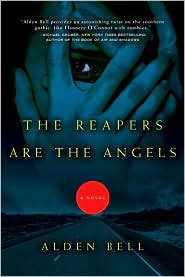
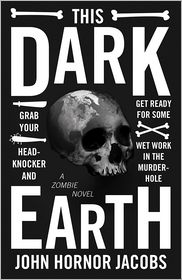

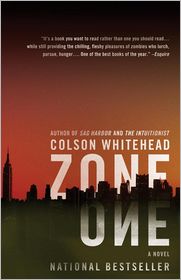
No comments:
Post a Comment